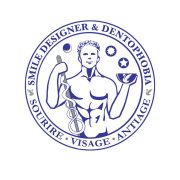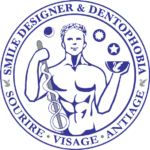LA SÉdation dentaire semi inconsciente
soignez vos dents malgré la peur du dentiste
notre ENGAGEMENT zéro peur zéro douleur :
VOS soins dentaires sous SEDATION semi inCONSCIENTE
LA SÉDATION DENTAIRE SEMI INCONSCIENTE
SOIGNER VOS DENTS MALGRÉ LA PEUR DU DENTISTE
On appelle « sédation dentaire semi-inconsciente » tout type de protocole qui plonge le patient dans un « sommeil profond artificiel », mais pas dans un « coma artificiel ».
Les sédations dentaires semi-inconscientes sont réalisées par un médecin anesthésiste réanimateur au cabinet ou en clinique : Ce dernier plonge le patient dans un sommeil artificiel proche du naturel mais sans conscience de son environnement.
L’utilisation de l’une ou l’autre de ces techniques dépend de la formation du médecin anesthésiste-réanimateur, du désir et du besoin de confort du patient, du niveau d’invasion des interventions à pratiquer, de leur durée, de leur fréquence et de la législation en vigueur dans le pays où ces interventions sont pratiquées et bien sûr, du degré de peur du dentiste ou bien de la phobie des soins dentaires du patient.
A QUI LA SÉDATION DENTAIRE SEMI-INCONSCIENTE PEUT-ELLE CONVENIR ?
Également appelée sédation vigile, la sédation dentaire semi-inconsciente est le deuxième niveau de sédation dentaire, après la sédation dentaire consciente, et avant la sédation dentaire inconsciente, dans ce classement.
La sédation dentaire semi-inconsciente est particulièrement indiquée pour les patients suivants :
Les patients ayant peur du dentiste ou une une phobie du dentiste nécessitant des soins bucco-dentaires qui leur seraient impossibles de supporter sans une sédation dentaire adaptée ;
Les patients, éloignés des régions accueillant des pôles de soins dentaires spécialisés. Afin de minimiser la perte de temps et leurs frais de déplacements, ces personnes peuvent regrouper et compacter leurs séances de soins bucco-dentaires, sous sédation dentaire dans le plus grand confort ;
Les patients dont les activités professionnelles sont très accaparantes. Ces personnes disposent de peu de temps pour leur santé bucco-dentaire. De la même manière que précédemment, elles peuvent regrouper et compacter le maximum de séances de soins bucco-dentaires en un minimum de temps, tout en gardant un confort maximum ;
Les patients fragiles, âgés, à la santé précaire ou simplement en demande de confort maximum qui souhaitent la présence apaisante d’un médecin anesthésiste réanimateur lors des soins dentaires ;
L’anesthésiste va accompagner ces patients fragiles pour les rassurer et les sécuriser grâce à une sédation dentaire douce et une surveillance des fonctions vitales par monitoring au cabinet ou en clinique pendant les soins bucco-dentaires.
Le CHOIX DE LA Sédation dentaire SEMI INCONSCIENTE
La sédation par voie intra-veineuse de référence pour un large éventail de soins
LA DIAZANALGÉSIE
Principale technique de sédation semi-inconsciente, la diazanalgésie est ainsi nommée car elle consiste à injecter au patient, par voie intraveineuse, des sédatifs anxiolytiques de la famille des Benzodiazépines. Le patient reste dans un état de conscience modifiée, confortable et non anxiogène, pendant que le chirurgien-dentiste se concentre sur l’intervention. Elle représente la technique de sédation dentaire de référence pour bon nombre de patients qui doivent subir un acte de chirurgie orale comme la pose d’implants dentaires, une greffe gingivale, une greffe osseuse préimplantaire ou une pose de prothèses dentaire, un soin conservateur. L’indication de cette technique de sédation dentaire est posée pour tout soins bucco-dentaires relativement long et au cours duquel un inconfort, un stress, ou une lassitude peuvent intervenir. Du fait de sa grande souplesse et réversibilité, la diazanalgésie peut être prolongée aussi longtemps que nécessaire. L’anesthésiste-réanimateur, lors de la sédation dentaire par diazanalgésie, accompagne en permanence le chirurgien-dentiste lors des soins bucco dentaires. Il réinjecte au patient des doses de sédatifs par voie intraveineuse pour que la séance se déroule dans les meilleures conditions de confort, à la fois pour le patient, mais aussi pour le médecin dentiste. La différence avec la narco-hypnose est que les sédatifs anxiolytiques sont injectés en quantité plus importante, ce qui exonère le médecin anesthésiste réanimateur de pratiquer une hypnose par auto suggestion. Toutefois, le roulement du protocole est similaire et les consignes quasi identiques.
Injectées par voie intraveineuse, les Benzodiazépines rendent le patient à la fois inconscient de ce qui se passe dans l’espace opératoire et de la durée de ses soins bucco-dentaires, tout en lui permettant de répondre à des consignes simples. L’élimination, très rapide, des sédatifs anxiolytiques permet de se réveiller immédiatement après la fin de l’intervention. D’où, l’autre nom de la diazanalgésie : la “sédation vigile”.
Le patient, placé dans un sommeil profond, est ainsi totalement désinhibé et dans les meilleures conditions pour conduire correctement l’intervention.
Le sédatif anxiolytique sera injecté régulièrement, provoquant ainsi un sommeil induit. Il sera réversible très rapidement, dès l’arrêt de l’injection.
Du fait de l’élimination très rapide des Benzodiazépines, ce protocole est renouvelable dès le lendemain, si nécessaire. Il est particulièrement bien adapté aux longues séances de soins dentaires compactées.
Les avantages majeurs par rapport à la sédation consciente sédation consciente, par la prise de comprimés anxiolytiques comprimé relaxant ou l’inhalation du gaz MEOPA résident dans son caractère non aléatoire.
En effet, si les effets du comprimé sédatif anxiolytique ou de l’inhalation du gaz MEOPA sont relativement variables d’une personne à l’autre, il n’en est pas de même pour la diazanalgésie. Son déroulement est, au contraire, parfaitement contrôlé par l’anesthésiste-réanimateur. Celui-ci, administre régulièrement par voie intraveineuse des quantités de sédatifs anxiolytiques au gré des besoins de sédation qui agissent immédiatement. Les injections directes dans le sang sont beaucoup plus puissantes et contrôlables que des comprimés de Benzodiazépine pris par voie orale dont la quantité active dépend de leur passage de la barrière digestive.
Comme pour le comprimé relaxant, le gaz MEOPA ou la narco-hypnose, ce mode de sédation dentaire ne se substitue pas à l’anesthésie locale qui devra dans tous les cas être pratiquée par le chirurgien-dentiste.
A la fin de la séance, le patient se réveille immédiatement. Il échange de façon consciente avec l’équipe soignante. Dans certains cas, il peut ne plus se souvenir de cet échange quelques heures après son retour à son domicile : C’est ce que l’on appelle l’amnésie rétrograde. En effet, les médicaments injectés ont un effet amnésiant parfaitement normal. C’est pour cela que le patient doit être raccompagné chez lui par un proche.
Tous les patients sont éligibles à cette technique. En effet, être plongé dans un sommeil profond avec la présence constante d’un médecin anesthésiste est le moyen le plus apaisant et sécurisant d’être soigné, tout en n’ayant aucune conscience de ce qui se passe autour de vous.
Mais certaines personnes ont plus besoins de sédation dentaire que d’autres :
— Toutes les personnes anxieuses à l’approche d’un rendez-vous chez le dentiste peuvent demander ce type de sédation ;
– La sédation dentaire par diazanalgésie intéresse, au premier plan, les personnes ayant peur du dentiste ou même, phobiques du dentiste (personne stomatophobe).
— Mais aussi les personnes ayant la phobie des piqûres (personne achmophobe), ou phobiques du sang (personne hémophobe) ;
– Les sédations dentaires sont l’unique protocole, à disposition des chirurgiens-dentistes, pour venir en aide aux patients en rupture de soins du fait de leur appréhension psychologique ;
– Les patients ayant régulièrement des réflexes nauséeux lors des soins bucco dentaires.
Certaine personnes, à l’approche des instruments du dentiste, ont un réflexe nauséeux incoercible. Ces réflexes nauséeux étant purement psychologique, ils disparaissent avec la perte de conscience. Ces patients se verront grandement apaisés par ce type de sédation. Ils ne verront pas ces instruments et ne ressentiront donc aucune appréhension, puisque leur cerveau est totalement déconnecté de la réalité.
– Les personnes éloignées des cliniques dentaire spécialisées.
Lorsqu’on vit dans un lieu qui ne dispose pas de structures adaptées aux besoins spécifiques des patients, la sédation dentaire par diazanalgésie est très pratique pour être soigné loin de son domicile. Elle offre la possibilité de compacter des soins bucco dentaires de grande envergure, avec des séances longues et très rapprochées dans un total confort. Ce gain de temps et de sérénité est extrêmement appréciable.
– Les personnes menant une activité professionnelle très chronophage.
Certaine personnes ne peuvent pas consacrer à leur santé dentaire le temps nécessaire, du fait d’un emploi du temps trop chargé. Elles seront également très intéressées par ce type de sédation semi-inconsciente. En effet, ce sera l’occasion, pour elles, de traiter en profondeur des problèmes dentaires de toutes natures, comme la pose d’implants dentaire, des greffes osseuses comme un comblement de sinus, des facettes dentaires ou tout autres protocoles de soins bucco-dentaires chronophages et/ou pénibles.
Les soins bucco-dentaires seront compactés dans des séances de quatre à cinq heures jusqu’à l’exécution complète du plan de traitement. Le nombre total de séances sera réduite au minimum. Ces séances peuvent être rapprochées ou au contraire espacées, selon les contraintes spécifiques du patient.
– Les personnes qui sont habituées à un confort de vie.
Certaines personnes aiment vivre dans le confort maximum et ne souhaitent pas vivre des moments pénibles ou même seulement délicats, dans un cabinet dentaire. Elles seront forcément séduites par l’absence de sensations désagréables lors des sédations semi-inconscientes. Paradoxalement, ces séances deviennent très agréables puisqu’elles plongent le patient dans un état de « béatitude ».
Si vous avez choisi de recourir à la diazanalgésie pour vos soins dentaires sous sédation, sachez que la procédure, menée par le chirurgien-dentiste se tiendra, en permanence, aux côtés du médecin anesthésiste-réanimateur durant tous les soins bucco dentaires. Ce protocole est conçue pour être le plus sécurisée possible.
Au cours de l’intervention, le médecin anesthésiste-réanimateur, qui réalise la diazanalgésie, contrôle en permanence les fonctions vitales du patient et son degré d’inconscience, afin que ce dernier soit dans un état constant de confort maximum.
La surveillance nécessite un moniteur cardiaque, un oxymètre, un tensiomètre, une colonne de sécurité pour ventiler le patient en cas d’apnée, ainsi que tous les gaz médicaux comme l’oxygène, nécessaires pour faire face aux situations d’urgence.
D’une façon générale, le matériel à disposition dans le cabinet dentaire équipé pour une sédation dentaire est le même que dans une salle de réveil de clinique, afin de garantir le niveau de sécurité optimal.
Il faut savoir que la peur du dentiste ou le stress dans un cabinet dentaire, peut générer des malaises qui sont beaucoup plus dangereux qu’une sédation dentaire bien conduite par un médecin anesthésiste avec un matériel adapté.
Il convient de vérifier que les cabinets dentaires possèdent le matériel de réanimation idoine pour ce type d’anesthésie. La formation aux situations d’urgence doit être celle d’un professionnel de la réanimation, même si la plupart des dentistes ont suivi lors de leur cursus une formation de base.
Une conclusion s’impose :
– La maîtrise de la peur de dentiste et du stress dans un cabinet dentaire, ainsi que le contrôle des fonctions vitales du patient par des médecins anesthésistes réanimateurs formés et entraînés, permettent de sécuriser des interventions, même lourdes, paradoxalement mieux que des interventions réputées légères, avec une absence de tout le matériel de réanimation et les compétences précitées.
Lorsque l’intervention est terminée, vous vous réveillez en douceur, car il suffit que l’apport de Benzodiazépine s’arrête pour que l’effet se dissipe très vite, la demi-vie de ces produits étant très courte.
Halte au stress ! Même si le “risque zéro” n’existe pas en médecine, vous avez fait le choix de vous entourer de compétences reconnues en dentisterie et en anesthésie. Vous vous réveillerez en gardant de cette expérience un souvenir diffus, doux et plutôt agréable.
Ce protocole de sédation dentaire permet de compacter les soins bucco dentaires en une ou quelques séances et réduire considérablement la durée globale des soins.
Tous les traitements bucco-dentaires peuvent être réalisé sans douleur et sans peur comme par exemple :
– Les soins dentaires conservateurs ;
– Les prothèses dentaires, comme le pose de couronnes céramiques ou des bridges céramiques.
Il est particulièrement indiqué pour des soins d’envergure, comme toutes les interventions de chirurgie orale.
Comme par exemple :
– Les greffes osseuses préimplantaires (comblements de sinus, greffes osseuses alvéolaires, les extractions dentaires)
– Les chirurgies d’implantologie, de chirurgie maxillo-faciale préimplantaire ;
– La chirurgie des gencives (chirurgie mucco-gingivale, de parodontologie).
La sédation dentaire par diazanalgésie modifie l’état de conscience du patient. Ce dernier est plongé dans un sommeil profond artificiel. Il est aussi inconscient de son environnement médical et des soins bucco-dentaires pratiqués qu’avec une neurolept-analgésie ou une anesthésie générale. Cependant, ces techniques sont très différentes. Ces deux dernières doivent être utilisées qu’en cas de nécessité absolue. Seule la Suisse autorise ces niveaux de sédations profondes au cabinet dentaire. Contrairement à la France, qui n’a pas encore légiféré en ce sens et préfère encore un milieu hospitalier.
Les séances de soins bucco dentaires sous sédation dentaire par diazanalgésie peuvent être répétées à un rythme très rapproché, du fait de l’élimination très rapide par l’organisme des Benzodiazépines.
Du fait des injections d’antibiotiques, d’anti-inflammatoires et d’antalgiques puissants en intraveineux les suites et douleurs post opératoires sont très minimes ;
Il n’existe que très peu de contre-indications à ce mode de sédation dentaire. Pour autant, des principes de précaution sont appliqués :
– Chaque sédation dentaire par diazanalgésie n’excède pas une durée de cinq heures, par principe de précaution ;
– La sédation dentaire par diazanalgésie est strictement encadrée par un médecin anesthésiste réanimateur. Il aura pris connaissance de votre état de santé lors de la consultation préopératoire obligatoire et n’aura pas identifié de contre-indication médicale à ce mode de sédation semi-inconsciente ;
– Vous devrez être à jeun, c’est à dire cesser de boire et de manger, six heures avant votre intervention ;
– Le souvenir des interventions est diffus et plutôt agréable. Pour autant, vous risquez de ne pas vous rappeler ni de votre réveil, ni de votre retour chez vous : C’est le phénomène d’amnésie rétrograde post opératoire. Il est un effet secondaire normal des sédatifs anxiolytiques injectés. C’est pour cela que vous devez être raccompagné jusqu’à votre domicile par un proche ;
– Il est conseiller de ne pas passer la nuit qui suit votre intervention, seul à votre domicile ;
– Il est interdit de conduire, durant les 12 heures qui suivent l’anesthésie, par mesure de précaution évidente ;
– Vous n’êtes pas autorisé à consommer de l’alcool ou du tabac ;
– La reprise de vos activités quotidiennes et professionnelles pourra, selon le type d’intervention réalisé, s’effectuer dés le lendemain.
LA NARCO-HYPNOSE OU HYPNOSE MÉDICAMENTEUSE
La narco hypnose ou hypnose médicamenteuse comme sédation dentaire pour des patients ayant peur du dentiste ou bien la phobie des soins dentaires. Elle conjugue l’injection, par voie intraveineuse, d’un sédatif léger et l’hypnose par autosuggestion.
Son principal avantage est de minimiser l’injection des doses de sédatifs par voie intraveineuse, puisque le patient est déjà placé par le médecin anesthésiste dans un état hypnotique grâce à l’autosuggestion.
La technique de sédation dentaire commence par la pose d’un abord veineux ou cathéter pour permettre d’injecter des antibiotiques, des anti-inflammatoires et des antidouleurs ou tout autres médicaments utiles.
Il est important de remarquer que l’abord veineux est une garantie de sécurité pour la patient. En effet, les médicaments de confort ou d‘urgence peuvent être immédiatement injectés par le médecin anesthésiste en cas de besoin, en plus de ceux de la sédation dentaire pour la peur du dentiste.
Pour les patients achmophobes (patient ayant peur des piqures) la pose d’un EMLAPATCH, contenant 5 % d’anesthésique local, sur les veines du pli du coude, permet de ne rien ressentir lors de la pose du cathéter.
Le cathéter permet aussi d’avoir un accès permanent à l’organisme pour injecter des médicaments en cas d’urgence ou de détresse médicale. C’est un gage de sécurité indéniable pour le patient quelque soit son état de santé ou de stress. Cette sécurité est particulièrement importante pour des patients ayant peur du dentiste ou bien la phobie des soins dentaires.
Toutes les techniques précédemment décrites dans le chapitre des sédations conscientes comme la prise de comprimés d’anxiolytiques et l’inhalation de gaz MEOPA peuvent être combinés aux techniques de sédations semi inconscientes, afin de préparer le patient, ayant peur du dentiste ou bien la phobie des soins dentaires, à une relaxation totale.
La combinaison de l’injection d’un sédatif léger de la famille des benzodiazépines et de l’hypnose par autosuggestion de type hypnose Ericksonienne implique une certaine réceptivité à l’hypnose en général. Or, les personnes à forte personnalité ou les patients ayant peur du dentiste ou bien la phobie des soins dentaires ou du dentiste (les patients atteintes de stomatophobie) sont peu réceptifs à l’hypnose. Certaines sont même totalement réfractaires.
La solution est l’augmentation de la quantité de sédatif injecté par voie intra veineuse, jusqu’à l’obtention de l’état de somnolence souhaité et le relâchement psychologique du patient. Les sédatifs, administrés par voie intraveineuse, optimisent immédiatement les effets de l’hypnose et réciproquement.
Toutes les personnes voulant se faire soigner au cabinet dentaire sont éligibles à cette sédation dentaire car elle rend les soins dentaires très confortables. Mais, elle est particulièrement indiquée pour les patients suivants :
– Les patients devant subir des actes invasifs ou chirurgicaux et/ou relativement longs peuvent envisager ce mode de sédation dentaire.
– Les patients ayant peur du dentiste ou bien la phobie des soins dentaires, extrêmement anxieux à l’idée de recevoir des soins dentaires ou des personnes légitimement angoissées à l’idée de subir une intervention chirurgicale lourde, peuvent être soignées dans un confort et une sécurité maximum.
– Les personnes qui sont éloignées géographiquement des pôles de spécialisation dans le rajeunissement de votre sourire et l’implantologie ou des réhabilitations des mâchoires de grande ampleur en dentisterie esthétique . Ce type de plan de traitement implique de nombreuses séances qui peuvent être compactées dans un nombre réduit d’allers et retours au cabinet dentaire.
Le patient, placé sous sédation dentaire avec une voie intraveineuse et détendu par autohypnose, va se détacher de sa situation vécu et parvenir à un état de conscience modifié.
Grâce aux injections du sédatif par voie intraveineuse et de l’autosuggestion ses appréhensions et peurs disparaissent. Plongé dans un état de somnolence artificielle, il aura le sentiment de «flotter», de se détacher des soins bucco dentaires en cour d’exécution.
Pour autant, comme pour le comprimé relaxant ou le gaz MEOPA, ce mode de sédation dentaire ne se substitue pas à l’anesthésie locale qui devra, dans tous les cas, être pratiquée par le chirurgien-dentiste.
Ce mode de sédation dentaire par narco-hypnose ne peut être réalisé que par un médecin anesthésiste réanimateur formé à l’hypnose Ericksonienne.
Le patient a rencontré le médecin anesthésiste réanimateur pour la consultation préopératoire obligatoire. Après que le médecin a validé le protocole, l’intervention est programmée au cabinet ou en clinique.
Le patient se présente au lieu de l’intervention en étant à jeun depuis minimum six heures.
Il est placé en position semi-allongée sur le fauteuil dentaire. Il peut, au besoin, avoir déjà pris un comprimé relaxant. Le gaz MEOPA peut aussi lui être proposé. L’anesthésiste lui pose alors le cathéter, pour diffuser le sédatif par voie intraveineuse, à l’endroit où le patch EMLA à anesthésié la zone, au pli du coude.
Une fois le cathéter posé, le médecin anesthésiste modifie son état de conscience grâce à l’autohypnose.
Le sédatif, de la famille des benzodiazépines, injecté par voie intraveineuse de façon concomitante déculpe l’effet de l’hypnose, jusqu’à la déconnexion totale du patient de la réalité.
A partir de ce moment, le chirurgien-dentiste commence à traiter le patient. Ce dernier, n’a plus conscience de la nature des soins administrés, ni de leur durée.
Une dose minimale de sédatifs lui est administrée. La réversibilité de son état est immédiate au signal de l’anesthésiste.
Le patient après son réveille repart immédiatement. Par mesure de précaution, il doit être accompagné par un parent ou un ami jusqu’à son domicile.
Il pourra retrouver ses occupations quotidiennes dès le lendemain.
Tous les types de soins buccodentaires peuvent être pratiqués sous sédation dentaire par narco-hypnose au cabinet dentaire.
Cette technique peut également être pratiquée en milieu hospitalier ou en clinique, pour des opérations particulièrement lourdes et invasives.
Tous les types de soins bucco-dentaires, comme par exemple la pose de prothèses dentaires ou les interventions de chirurgie orale, sont éligibles à ce type de sédation dentaire.
Aborder, sans gêne, ce point avec votre médecin dentiste qui vous conseillera au mieux, après avoir cerné votre niveau de stress et défini le type de soins que vous devrez recevoir.
Le “risque zéro” n’existe jamais en médecine même si toutes les précautions sont prises. Des règles sont à respecter :
– Vous devrez être à jeun, c’est à dire cesser de boire et de manger, six heures avant votre intervention ;
– Vous êtes autorisé à rentrer chez vous juste après avoir recouvrer vos esprits, après l’intervention. Mais, prenez vos dispositions pour qu’un proche vienne vous raccompagner jusqu’à votre domicile ;
– Vous veillerez également à ne pas passer la nuit suivante, seul à votre domicile ;
– Il est interdit de conduire, par mesure de précaution évidente, durant les 12 heures suivant votre anesthésie ;
– Vous pouvez faire un repas léger le soir, sans consommer, bien sûr, ni alcool, ni tabac.
En respectant ces indications, vous garderez de l’intervention un souvenir diffus, plutôt agréable.
Du fait des injections intraveineuses d’antibiotiques, d’anti-inflammatoires et d’antalgiques puissants, en peropératoire, les suites et douleurs post opératoires sont minimes.
La reprise de vos activités quotidiennes et professionnelles pourra, selon l’intervention réalisée, s’effectuer dés le lendemain.
LA SÉDATION MARIÉE À L'HYPNOSE POUR DES PATIENTS AYANT PEUR DU DENTISTE
VOUS ÊTES UNIQUE !
CAS CLINIQUES DE RESTRUCTURATION DU SOURIRE SOUS SÉDATION DENTAIRE SEMI-INCONSCIENTE



